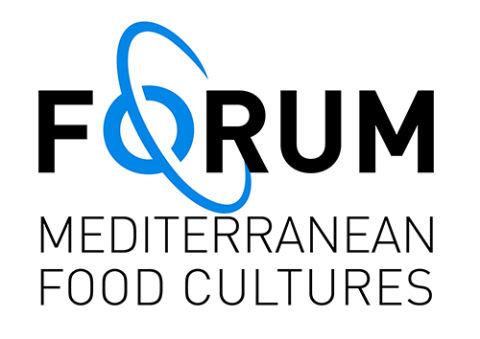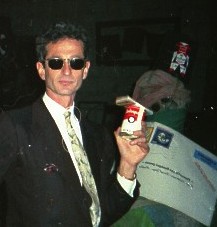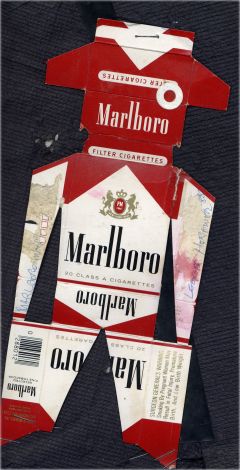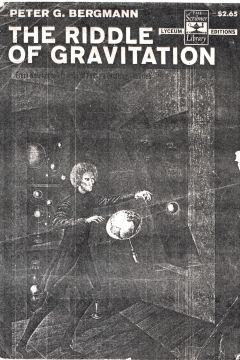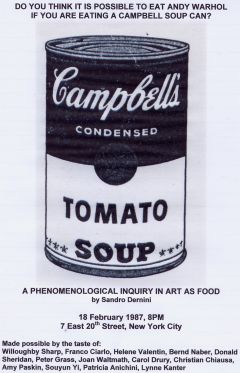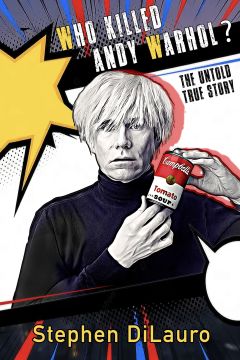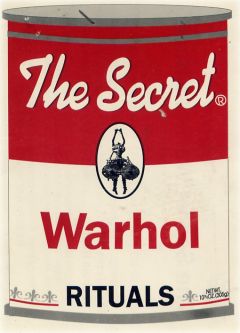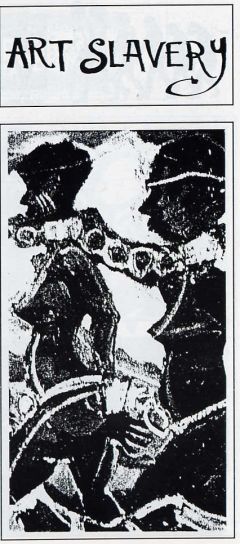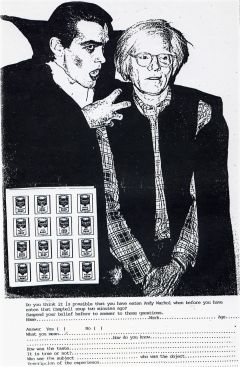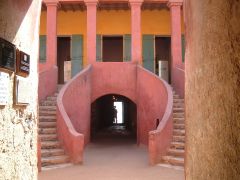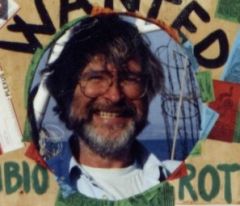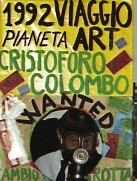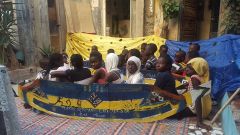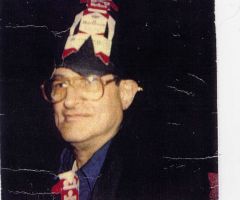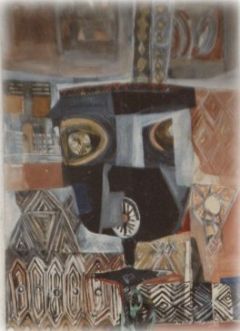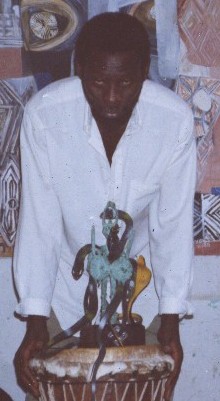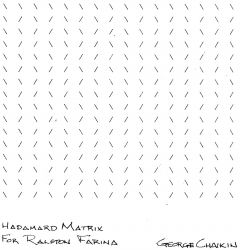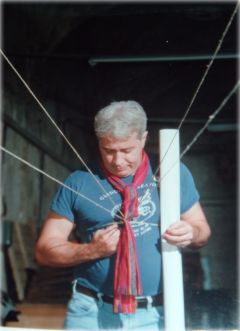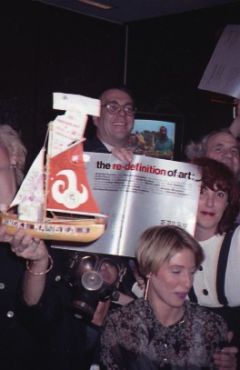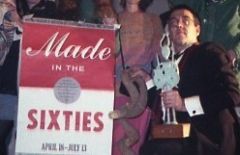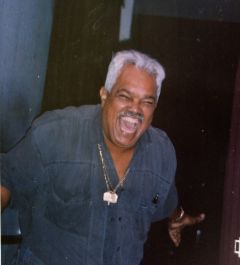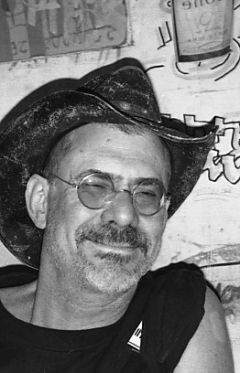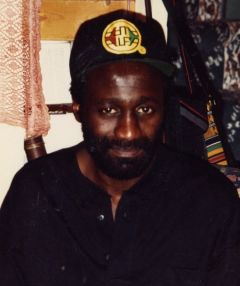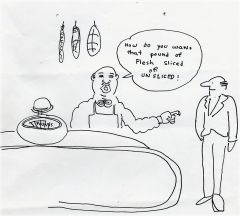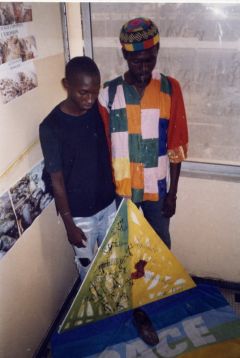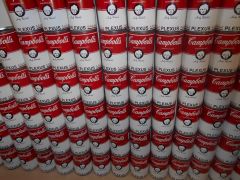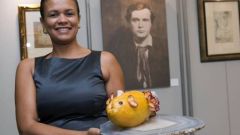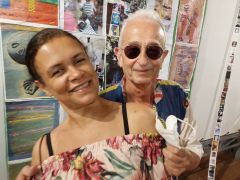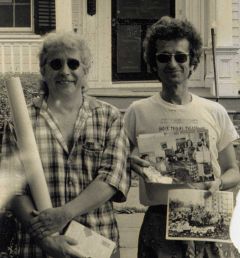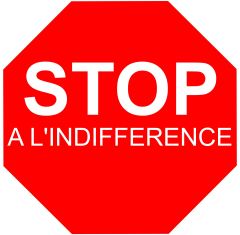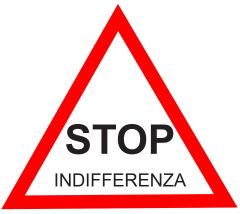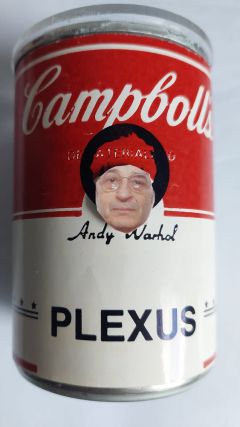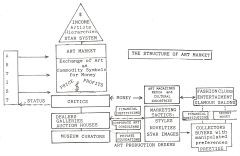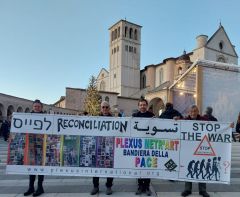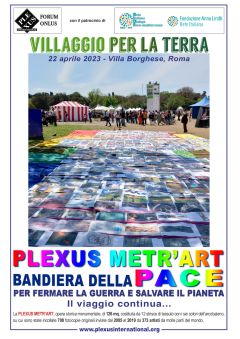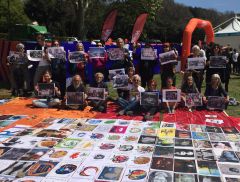WELCOME TO
PLEXUS INTERNATIONAL OFFICIAL ARCHIVES

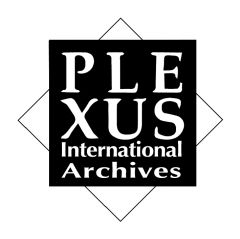
DISCOVERY PLEXUS PLANETS
Over its 40 years, all Plexus events have been documented in the Plexus Archives,built one upon the other made up of past concepts and activities projected into the future.
At the top of this home page there is a search banner by artist name or event to facilitate the search among more than 1000 artists who participated in more 200 Plexus events, from 1982 to 2024.
In New York, on February 20 1988, on the occasion of the first anniversary of his 1987 Andy Warhol’s dematerialization performance, Sandro Dernini organized the Plexus happening "An Art Redefinition of a Campbell Soup Can", inspired by the symposium The Redefinition of Art in the Collision of Cultures in the Post-Modern World, held at New York University in that time by the I.C.A.S.A. (International Center for Advanced Studies in Art).

PLEXUS is a co-authorship adventure of artists in the first person
Marlboro Man, Lenny Horowitz, New York, 1986
On February 27, 1986, in New York, in the Lower East Side, at the Cultural Civic Centre C.U.A.N.D.O. (Culturas Unidas Aspireran Nuestro Destinos Original) , Plexus staged its Art Opera 3, “Eve: Escape for Donna Purgatorio from 1986 Anno Domini by the Multinational Chain Gang of Dowtown New York”, created and produced collectively by 220 artists together. Rife with symbolism, the story line of EVE art opera was about the journey of an art slave ship, on its travel through art history, escaping from the contemporary New York artworld.
It was only one hour spectacular event for the public, built for a week through an atelier des arts, performed by a cast of musicians, poets, actors, dancers, videomakers, performers and visual artists, featuring many prominent figures on the N.Y. downtown avant-garde scene, on board a metaphoric art slaves boat.

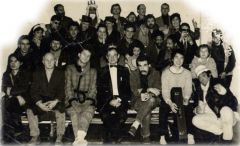
THE WORLD is CHANGED!!
PLEXUS NON LINEAR VISION
PLEXUS MITHO-COMPRESSIONIST CURVILINEAR NURAGIC VISION
PLEXUS NON LINEAR VISION , 23s BLOG, 13.12. 2025
DEMATERIALIZATION OF REALITY
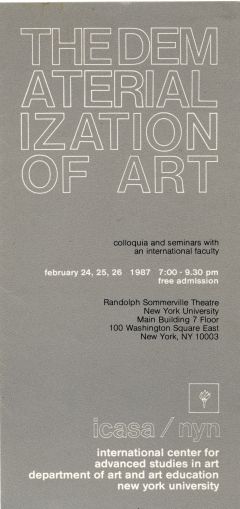
DO YOU THINK THAT IS IT POSSIBLE TO EAT AND DIGEST ANDY WARHOL DEMATERIALIZED INTO A PLEXUS CAMPBOLL'S SOUP CAN?. 23s BLOG, 18.11.2025
Artwork by David Mora Catlett, New York, 1996
In the beginning of January 1987, in Amsterdam, Plexus started to be developed as a multi-lateral interdisciplinary recall network, created and produced by artists and scientists in the first person with Willem Brugman staging
the arrival of a Plexus Working Station to assist its art slaves boat travelling on the triangle slaves route of New York-Europa (Amsterdam, Paris, Rome, Sardinia)-House of the Slaves, Goree, Dakar, Senegal, Africa.
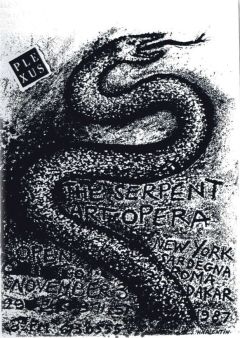


The Plexus Working Station was staged at the Cosaai Production of Hans Harlos, who had built a huge ark in the center of the Amsterdam harbor, as a recall presentation of the Plexus Art Opera 3 "


Artwork by Hans Harlos, Cosaii Production, Amsterdam 1987
In the same time, in New York, with Shalom Newman at Fusion Arts, it was organized a party-event with a fire performance by Paolo Buggiani and his Minotaur, to present the Plexus Purgatorio Book, made by one single original page from all artists from the 1986 Plexus Art Opera “Eve”, to promote a broader participation from New York to Sardinia for the Serpent event.

Plexus Eve Book Presentation at Fusion Art, 1987, New York
On 18 February 1987, in New York, at the Patrizia Anichini Gallery, DO YOU THINK THAT IT IS POSSIBLE TO EAT ANDY WARHOL BY EATING A PLEXUS CAMPBOLL'S SOUP CAN?
was performed as an aesthetic inquiry by Sandro Dernini for his PhD. New York University study.
Named it as "Art Slaverism" by Sandro Dernini
On June 30, 1987 in Rome, at the Theatre in Trastevere, an old L.I.A.C.A. place, it was held the press conference to present the Plexus art co-opera " , as the first international art slave market show in modern art history, to be staged, in Sardinia, at the megalithic sanctuary of Sa Itria in Gavoi, from 1 to 4 July, 1987.
, as the first international art slave market show in modern art history, to be staged, in Sardinia, at the megalithic sanctuary of Sa Itria in Gavoi, from 1 to 4 July, 1987.
After the press conference a Plexus happening was performed in the streets of Trastevere as a recall of the 1978
L.I.A.C.A. (Lega Italiana Associazioni Culturali Alternative) cultural slaves market happening held in Rome the freedom of expression and association in Italy.
Il Serpente di Pietra, with more 160 artists as art slaves coming from 23 different countries,
was a four days of art and science, connected via the bitnet academic computer network, before that Internet existed, coordinated by the Bruce Breland and Robert Dunn of the Dax Group of Carnegie Mellon University with Franco Meloni of the University of Cagliari. It was dedicated to the Heinrich Hertz’s 100 years electromagnetic celebration for Freedom in Art and Communication.


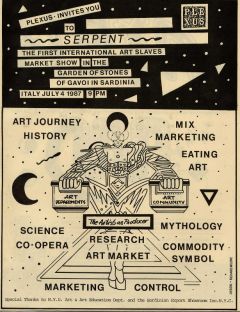
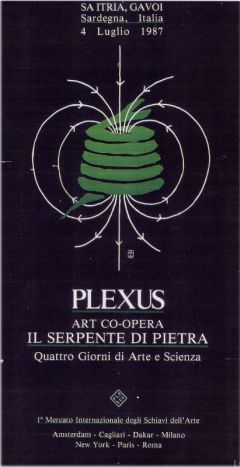
PLEXUS ART CO-OPERA 4 IL SERPENTE DI PIETRA, Gavoi, Sardinia, 1987
Passport for Plexus Serpent, from Purgatorio to Paradise, Gavoi, Sardinia, 1987
On May 21, 1988, the Plexus Open Call Art Slavery Photo Shot Manifesto, as a multi-fractal 900 artists faces photo,was launched from the Rivington School, Lower East Side NY. freedom of art.
Rivington School was a radical art urban project, founded by Ray Kelly as a workshop of metal sculptors, with a particular style, summed up as “Dada meets Country-Western”, building a metal garden, in an empty ruined parking lot, at 172 Forsythe Street, in downtown of Manhattan.
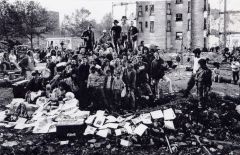
A large number of historical Plexus participants answered to the Plexus Open Call, and on May 21, 1988, at the Rivington School’s monumental sculpture sanctuary, Ivan Dalla Tana took the first historical art group photo shoot, as ritual opening act of the Plexus Manifesto, before its International departure.
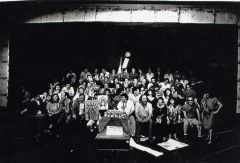
In Rome, on June 15, 1988, at the Metateatro, the second group shot of artists, including several historical participants of the Italian avant-garde of the 70’s and 80’s, was taken by Adriano Mordenti, in front of a large photo of the Rivington School’s event and at the center of the stage framed with boxing ring posters from a past theatre play.

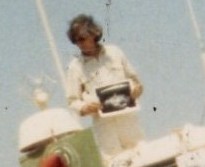
ELISABETH BOAT, CARLOFORTE, SARDINIA PLEXUS RECALL FRACTAL
The third historical Plexus group photo was taken, three days after, on June 18, in Sardinia, in the harbour of Carloforte, where previous Plexus group shots from New York and Rome and Plexus Campbell’s cans, were carried by Sandro Dernini and Fabrizio Bertuccioli on board the Elisabeth boat, symbolically “dressed” as the Plexus art slave boat
On August 26, 1988, a serpentine art procession parade of hundreds participants, performing ritually the exile to Gabon of Cheik Amoudou Bamba, theatrically directed by Omar Seck of the National Theatre Sorano, moved from the studio of Kre MBaye, at rue 17 angle 8, in the Medina, going through the streets to Dakar harbour the take the ferryboat for the island of Goree.
At the conclusion of the parade, Sandro presented the Plexus International Open Call Against Art Slavery Manifesto to the representative of the Mayor together with the proposal to open a World Art Bank in Goree, against any kind of slavery. A large group photo shot, made inside the House of the Slaves on the stairs of “the door of no return,” ended the Plexus event.
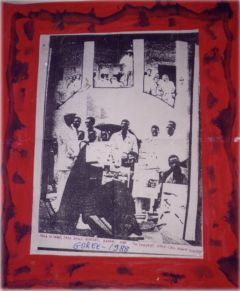
THE DOOR OF NO RETURN, HOUSE OF THE SLAVES OF GOREE, DAKAR
THE VOYAGE OF THE ELISABETH
RECONSTRUCTION OF THE DEMATERIALIZATION OF THE PLEXUS BLACK BOX TIME CAPSULE, NEW YORK UNIVERSITY 1997, RECONNECTING THE STORYLINE, JOIN THE DOSTS

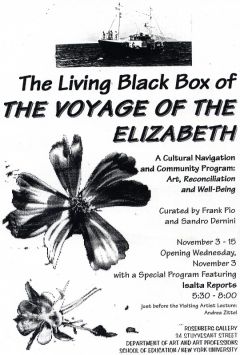
THE LIVING BLACK BOX OF THE VOYAGE OF THE ELISABETH, NEW YORK UNIVERSITY, ROSENBERG GALLERY, 1993


Elisabeth La Caravella dell'Arte, Carloforte, Sardinia, 1988
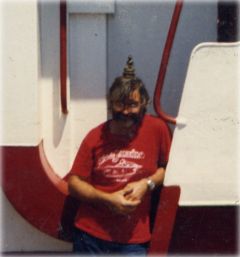
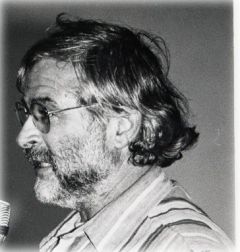
Carlo Dernini, The Captain of the Elisabeth

The Voyage of the Elisabeth boat, Sardinia, 1995 Marconi '95 WellBeing Call
On November 13-20, 1996, the special event
From Welfare to Well Being: Eating Art, Get the Best From Your Food, Food for All, on the occasion of the First World Food Summit organized by FAO United Nations Organization , was staged i at the Roof Garden of the Palazzo delle Esposizioni of Rome. From there, Plexus launched an Open Call for a World Art Bank, in Goree-Dakar, Against Any Slavery In Order To Survive, addressed to support nutritional education projects in the most disavantaged communities, starting from the Medina of Dakar.
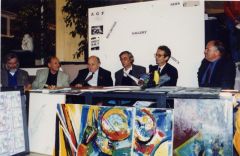

The Voyage of the Elisabeth for the Plexus Art World Bank
PLEXUS KRE MBAYE ATERLIER D'ART POUR LES ENFANTS MEDINA-DAKAR
PLEXUS METR'ART
Plexus Metr'Art, is a monumental historical work of contemporary art, made up of 390.94 meters of original photocopies, from 2004-2019, of 935 digital works (jpg), by 469 artists from all over the world as their contribution to the
Plexus Open Calls
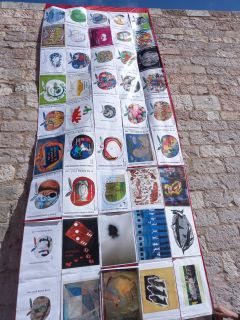

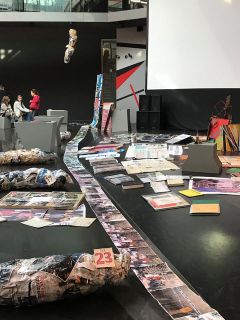
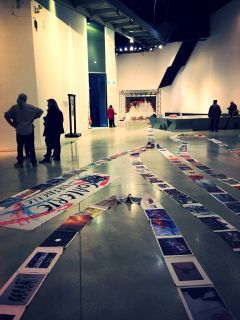


THE VOYAGE OF THE PLEXUS METR'ART
Since 2004 up today, the Plexus Metr'art has traveled physically and virtually between Gorée and Dakar (Senegal) - Ballarat and Cairns (Australia) - Lecce, Rome, Cagliari, Passo del Furlo (Italy) – New York , Palma de Gran Canaria, Rio de Janeiro Jerusalem, Rome, Assisi.
WHAT IS PLEXUS?
What you feel and see is your own creation…
We are called PLEXUS
Leonard Horowitz, New York, 1986
Plexus is a tendency to watch what happens in this planet with a consciousness of what happens, with no separation between the world and the human being.
Kre MBaye, Medina, Dakar, 1986
The Plexus process is a not linear activity and less rationale, which the coherence appears only after the fact....and you will understand it only after you let yourself participating into it.
George Chaikin, New York 1985
Hadamard Matrix Why it is Art
...It’s art because it is recursive. I’ll bet you never heard this one before, but I’m sure you’ve encountered the concept. It means that drawing contains its own reiteration at a different scale – this is fundamental to its algorithm – that it is defined in terms of itself on a different scale...
George Chaikin
PLEXUS is beautiful chaos
Stephen DiLauro, Lower East Side New York, 1988
Plexus Viaggio del Serpente, New York University, 1988
Plexus may be is one of the most complex, one of the most universal, in Plexus we find so many different kinds of performances of art, actions and exhibitions, which is important as a kind of summa of all works since the Living Theatre, Cage, all schools of improviser art.
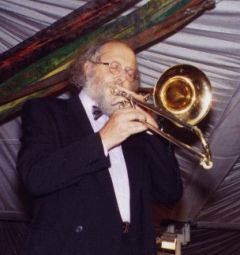
Giancarlo Schiaffini, Rome/New York, 1981
See and You See. Now the Space between You and Me Disappears.
But I Still Despair because I Don’t Know whether You Did what I Did….
in order to See what You See.
Miguel Algarin, Lower East Side, New York
Art is a way of life, it is a way of understanding. Art is something else from money, and from what bullshit is presented usually. Art is the future which can't be controlled. It is in the air without wires. Art is free. The artists are part of the structure which the power system is trying to push out. Liquid forms vs. square lines.
Ray Kelly, New York, 1985
DEFINITION
l am
What you
Don't think
l am
Which is what
You don't
Know
The beauty of Plexus is that we were strong enough to be able to cross all conflicts, beside the fact that we have different origins, the feeling that we have, we were able to do what we had to do without to put in front our confrontations to block all the project and to go together and to move further the project to go on. There was a mystic force behind us to pass through all the economic difficulties and to answer to the question: for whom I am doing this?
Alfa Diallo, Lower East Side, New York
Long distance lies between virtual realities and actual living, breathing realities.
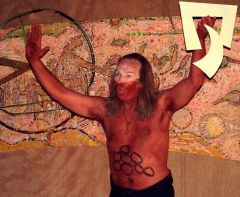
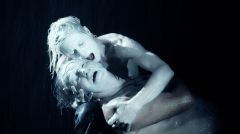
Willem Brugman, Cairns, Australia
PLEXUS IS WHAT YOU THINK, THAT IS.
PLEXUS is the shaman journey
along the lines of Van Gennep’s Rites of Passage‘s format.
Barnaby Ruhe, New York, 1986
Barnaby Ruhe, New York, 1986
Plexus Black Box has not a defined definition. It does not work in definition terms. It is a fluid thought which grows, changes, moves differently for each of us. It is made to not be framed. it is a fluid idea, with a lot concerns, it is a radical democracy, it is chaos.
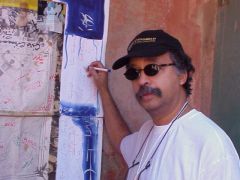
We needed greater synthesis efforts in order to define PLEXUS
"ENTROPY"
PLEXUS = kBlnW
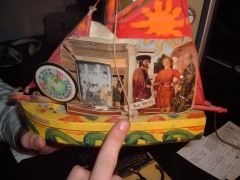
PLEXUS as entropy and therefore as information
Piero della Francesca as vision of Global Human.

How do you want that pound of Flesh, sliced or unsliced?
Plexus as an open artificial artform that offers the opportunity to many people to feel part of a cultural context, without knowing in advance the full picture of it and their reason for doing it.
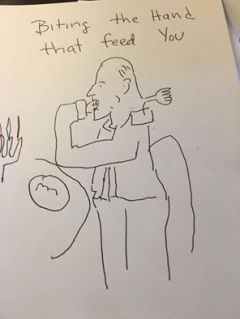
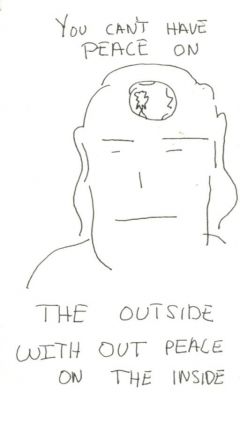
Mitch Ross, New York, 1983
Bring me in. Bring me out.
"Inside / outside". Perception is a form of seduction, a permanent infatuation between people's bodies. The works created and those to come are merely accessories for the journey. The light I carry – or the Plexus I carry – is a Dark Lantern, but it has a magic little door.
Inside /outside. La percezione è una forma di seduzione, una permanente infatuazione tra i corpi delle persone. Le opere fatte e quelle che verranno sono solo accessori da viaggio. La luce che porto – o il Plexus che porto – è una Lanterna Cieca, ma dispone di uno sportellino magico.


Carlo Antonio (Cicci) Borghi, Cagliari, 1986
Trampled Peace/Paix piétinée/Pace calpestata
100 LIMITED EDITIONS PLEXUS CAMPBOLL'S SOUP CANS
A Limited Editions of 100 Plexus Campboll's Soup Cans filled with 100 Time Capsules, turning each can into a token of discoveries into the multiple other Plexus worlds.
EATING ANDY WARHOL DEMATERIALIZED
In opening and eating a Plexus Campboll's Soup Can, what you will feel and see it will be your own creation…
First question, how do we eat art, and if we eat art how do we digested it?
Second question, how do we eat Andy Warhol dematerialized?, and if we eat Andy Warhol how do we digested him dematerialized?
ARTIFICIAL INTELLIGENGE
EATING ANDY WARHOL, 23s Blog
DO YOU THINK THAT HISTORY STILL HAS VALUE IN ART OR IT IS ABOUT JUST MONEY?
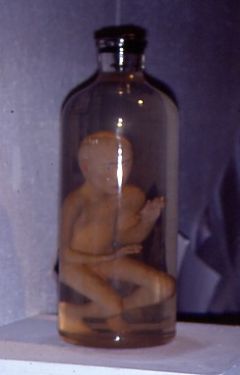
Eve Vaterlaus, "Homunculus", at The Living Plexus Black Box of the Voyage of the Elisabeth, Rosemberg Gallery, New York University, 1993
ART IS LIFE
ART IS NOT AN OPTIONAL
EATING ART IS A BIOLOGICAL NEED FOR OUR EVOLUTION. 23S BLOG 8.12.2025
PLEXUS wave of transformations ...
A dip in Plexus , aaaa ! Bruuu ! Humm ! Laugh ! I look around, return to the shore, a glance, and I dip back , picked up by a wave that makes you bump into its current strong, weak , which is transforming itself and, then it calms , I profit! ascend to the surface, a little ' breathing air , the head turns and re-turns , my eyes are toward the horizon and surroundings, see the others , thankfully, I am not alone !
PLEXUS onde di trasformazioni…
Un tuffo in Plexus, aaaa!bruuu!humm!rido!mi guardo intorno, ritorno sulla riva, un sguardo e, mi rituffo, ripresa da una ondata che ti fa sbattere contro la sua corrente forte, debole, che si trasforma e, poi si calma, profitto!salgo a galla un po’ d’aria respiro, la testa si gira e si rigira, lo sguardo è verso l’orizzonte e dintorno, si vedono gli altri, per fortuna, non sono sola!
Glaucia Coelho Demenjour, Rio de Janeiro, 2011
Plexus Viaggio del Serpente, New York University, 1988
 LET'S SAY POETRY
LET'S SAY POETRY
by Sebastian Comelli, Romd, 2008
Who killed Henrich Hertz?
George Chaikin and Sandro Dernini, 1987
ART IS MAGIC FOR
A CHANGE IN PERCEPTION AND AWARENESS
PLEXUS KRE MBAYE ATERLIER D'ART POUR LES ENFANTS MEDINA-DAKAR
RECONSTRUCTION OF THE DEMATERIALIZATION OF THE PLEXUS BLACK BOX TIME CAPSULE, NEW YORK UNIVERSITY 1997, RECONNECTING THE STORYLINE, JOIN THE DOSTS


THE LIVING BLACK BOX OF THE VOYAGE OF THE ELISABETH, NEW YORK UNIVERSITY, ROSENBERG GALLERY, 1993
Elisabeth La Caravella dell'Arte, Carloforte, Sardinia, 1988
The Voyage of the Elisabeth boat, Sardinia, 1995
The Voyage of the Elisabeth for the Plexus Art World Bank
THE VOYAGE OF THE ELISABETH IN THE PLANET OF ART, 1989



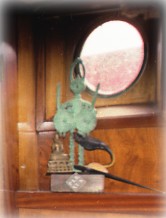
Carlo Dernini, The Captain of the Elisabeth
ART IS A BIOLOGICAL NEED FOR OUR EVOLUTION
IT IS NOT AN OPTIONAL

Plexus Art Opera n.3 "EVE, Escape for Donna Purgatorius from Anno Domini",
PLEXUS NON LINEAR VISION CURVILINEAR NURAGIC RECALL COMPRESSIONISME
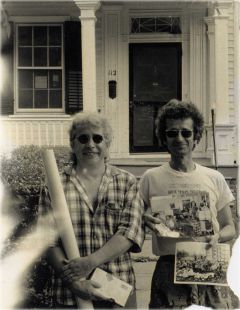
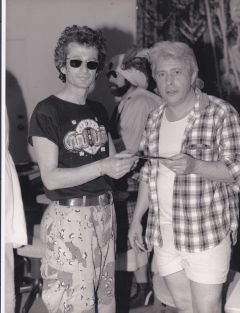
Who killed Henrich Hertz? George Chaikin and Sandro Dernini, 1987
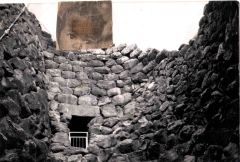
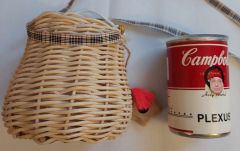
PLEXUS onde di trasformazioni…
Roma, Dicembre 2012 - Ottobre 2013
Un tuffo in Plexus, aaaa!bruuu!humm!rido!mi guardo intorno, ritorno sulla riva, un sguardo e, mi rituffo, ripresa da una ondata che ti fa sbattere contro la sua corrente forte, debole, che si trasforma e, poi si calma, profitto!salgo a galla un po’ d’aria respiro, la testa si gira e si rigira, lo sguardo è verso l’orizzonte e dintorno, si vedano gli altri, per fortuna!no sono sola! che ondata, tutti li a raccontare il loro “tuffo”. Mi ributto in questa onda che si trasforma e, ti lasci portare nelle sue dolce carezza, aspre, fredda, caldo, lasci il corpo e l’anima pronta, non proprio pronta! mah! ti prende…sono li per caso? Mah!per caso? Si per caso! e va bene! invece anch’io ero li a raccontare ben poco, ma ero li! anche per imparare, come per andare a scuola. All’interno tante porte, finestre, tunnel, pilastri, muri e tante storie; starci dentro ci si passa per piccoli ostacoli, codice, scritti, storia, giochi da montare e costruire.
Storie vissute, documentante, artisti in prima persone, opere, lettere, fotografie, oggetti, racconti, umani, terra, cibo, animale, musica, viaggi, notizie, fame, luce, amore, famiglia, amici, arte, fobie, dolore, guerra, schiavitu, cinema, insomma si parla di tutto e di tutto si parla. Ci si condivide con complicita’ e spontanea liberta’di espressione. Quale Plexus, con il suoi 30° Aniversario, meriterebbero l’onore d’essere una materia da studiare.
Semplicemente una piccola metafora di questo piccolo diagramma per il quale poi ci fa parte d’essere. Sei dentro, meno male che si scivola pure, in un’ altalena grande, tutti vogliamo e possiamo scivolare insieme, sono tanti percorsi belli.
Glaucia Coelho Demenjour Roma, Dicembre 2012
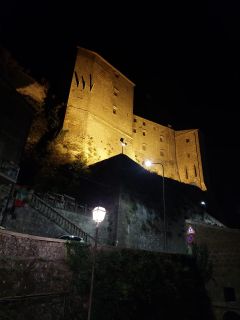
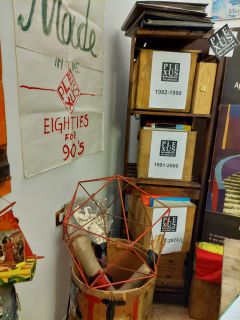
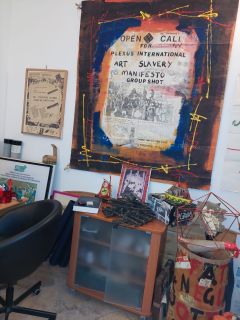
Plexus International Archives Gallery has moved from Rome to Sorano, Maremma Tuscany, via Giovanni Pascoli 6.
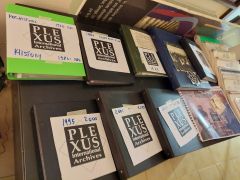
Plexus original documents can be consulted. Possibility of overnight stay on site, at the DJOUR'S Guest House, upon reservation.


